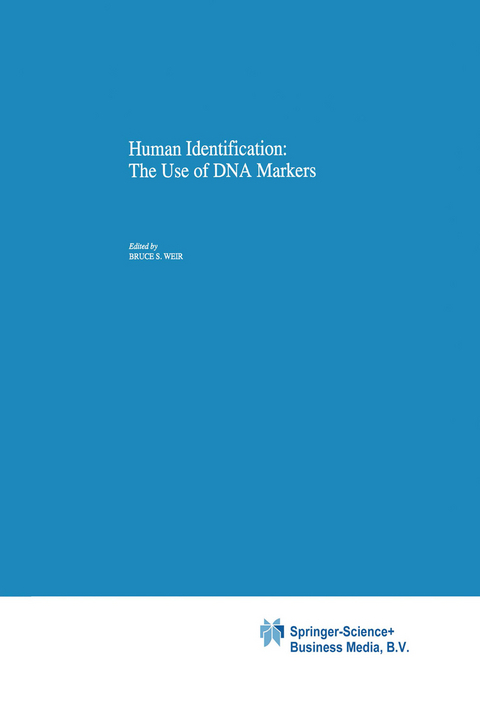
Human Identification: The Use of DNA Markers
Springer (Verlag)
978-0-7923-3520-7 (ISBN)
Audience: Indispensable to forensic scientists, laying out the concepts to all those with an interest in the use of genetic information. The chapters and exhaustive bibliography are vital information for all lawyers who must prosecute or defend DNA cases, and to judges trying such cases.
A method for quantifying differentiation between populations at multi-allelic loci and its implications for investigating identity and paternity.- The effect of relatedness on likelihood ratios and the use of conservative estimates.- The effects of inbreeding on DNA profile frequency estimates using PCR-based loci.- Correlation of DNA fragment sizes within loci in the presence of non-detectable alleles.- Inference of population subdivision from the VNTR distributions of New Zealanders.- Conditioning on the number of bands in interpreting matches of multilocus DNA profiles.- Match probability calculations for multi-locus DNA profiles.- Population genetics of short tandem repeat (STR) loci.- Assessing probability of paternity and the product rule in DNA systems.- The forensic debut of the NRC’s DNA report: population structure, ceiling frequencies and the need for numbers.- Applications of the Dirichlet distribution to forensic match probabilities.- The honest scientist’s guide to DNA evidence.- A comparison of tests for independence in the FBI RFLP data bases.- Alternative approaches to population structure.- DNA evidence: wrong answers or wrong questions?.- Subjective interpretation, laboratory error and the value of forensic DNA evidence: three case studies.- Exact tests for association between alleles at arbitrary numbers of loci.- A bibliography for the use of DNA in human identification.
| Reihe/Serie | Contemporary Issues in Genetics and Evolution ; 4 |
|---|---|
| Zusatzinfo | 10 Illustrations, black and white; V, 215 p. 10 illus. |
| Verlagsort | Dordrecht |
| Sprache | englisch |
| Maße | 155 x 235 mm |
| Themenwelt | Medizin / Pharmazie ► Medizinische Fachgebiete |
| Medizin / Pharmazie ► Studium | |
| Naturwissenschaften ► Biologie ► Biochemie | |
| Naturwissenschaften ► Biologie ► Genetik / Molekularbiologie | |
| Naturwissenschaften ► Biologie ► Zellbiologie | |
| ISBN-10 | 0-7923-3520-1 / 0792335201 |
| ISBN-13 | 978-0-7923-3520-7 / 9780792335207 |
| Zustand | Neuware |
| Haben Sie eine Frage zum Produkt? |
aus dem Bereich


